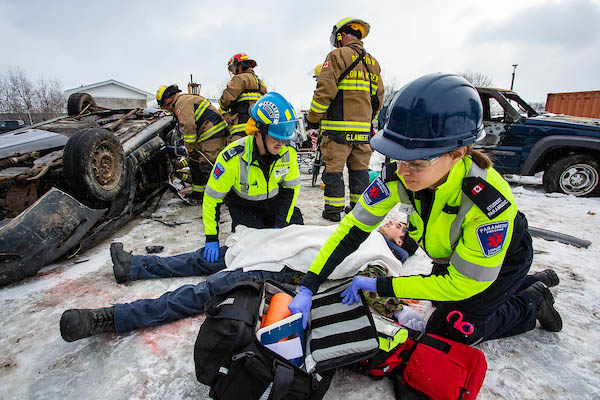Emergency Response Planning
Emergency response planning is a crucial component of any organization’s health, safety, and environmental (HSE) management system. It involves developing and implementing strategies, procedures, and resources to effectively respond to a wide range of emergency situations, from natural disasters to workplace incidents. Here is a step-by-step guide to creating an emergency response plan:

1. Establish an Emergency Response Team:
- Form a dedicated team responsible for developing, implementing, and managing the emergency response plan. This team should include individuals with diverse skills and expertise.
2. Identify Potential Emergencies:
- Conduct a thorough risk assessment to identify potential emergency scenarios that could affect your organization. These may include fires, chemical spills, natural disasters, medical emergencies, and security incidents.
3. Set Clear Objectives and Goals:
- Define the objectives and goals of your emergency response plan. What are you trying to achieve with this plan? Examples include protecting lives, minimizing property damage, and ensuring business continuity.
4. Establish Roles and Responsibilities:
- Clearly define the roles and responsibilities of team members and other employees during an emergency. Ensure that everyone knows their specific tasks and responsibilities.
5. Develop Communication Protocols:
- Create a communication plan that outlines how information will be disseminated during an emergency. Specify communication channels, contact lists, and procedures for notifying employees, emergency services, and other stakeholders.
6. Evacuation Plans:
- Develop evacuation plans with clearly marked escape routes, assembly points, and procedures for accounting for all employees and visitors during evacuations.
7. Shelter-in-Place Procedures:
- Define procedures for sheltering in place in situations where evacuation may not be safe, such as during chemical spills or severe weather events.
8. Emergency Contact Information:
- Compile a list of emergency contact information for employees, key personnel, emergency services, and local authorities. Ensure that this list is regularly updated.
9. Emergency Equipment and Supplies:
- Identify the emergency equipment and supplies needed for different types of emergencies, such as first aid kits, fire extinguishers, emergency generators, and personal protective equipment.
10. Training and Drills:
– Provide regular training to employees on emergency response procedures and conduct emergency drills and exercises. This helps familiarize everyone with the plan and ensures that they know what to do in a real emergency.
11. Resource Allocation:
– Determine the resources required to implement your emergency response plan, including personnel, equipment, and financial resources.
12. Business Continuity Planning:
– Develop strategies for maintaining essential business operations during and after an emergency. This includes data backup, remote work options, and alternative facilities if necessary.
13. Hazards Mitigation:
– Implement measures to mitigate the risks of potential emergencies, such as installing fire suppression systems, flood barriers, or earthquake-resistant structures.
14. Review and Update:
– Regularly review and update your emergency response plan to reflect changes in your organization, new risks, and lessons learned from previous incidents or drills.
15. Documentation:
– Document all aspects of the emergency response plan, including procedures, contact information, maps, and records of training and drills.
16. Regulatory Compliance:
– Ensure that your emergency response plan complies with all relevant HSE regulations, industry standards, and local ordinances.
17. Coordination with Authorities:
– Establish a relationship and coordinate with local emergency response agencies, such as fire departments, police, and emergency medical services.
18. Public Awareness:
– If your organization is located near a residential area, consider how you will communicate emergency information to the public and neighboring communities.
19. Post-Incident Evaluation:
– After any actual emergency, conduct a post-incident evaluation to assess the effectiveness of your response and identify areas for improvement.
Remember that an effective emergency response plan is a living document that evolves with your organization and its changing risks. Regularly review and update the plan to ensure its continued effectiveness in protecting the safety and well-being of your employees and the surrounding community.
